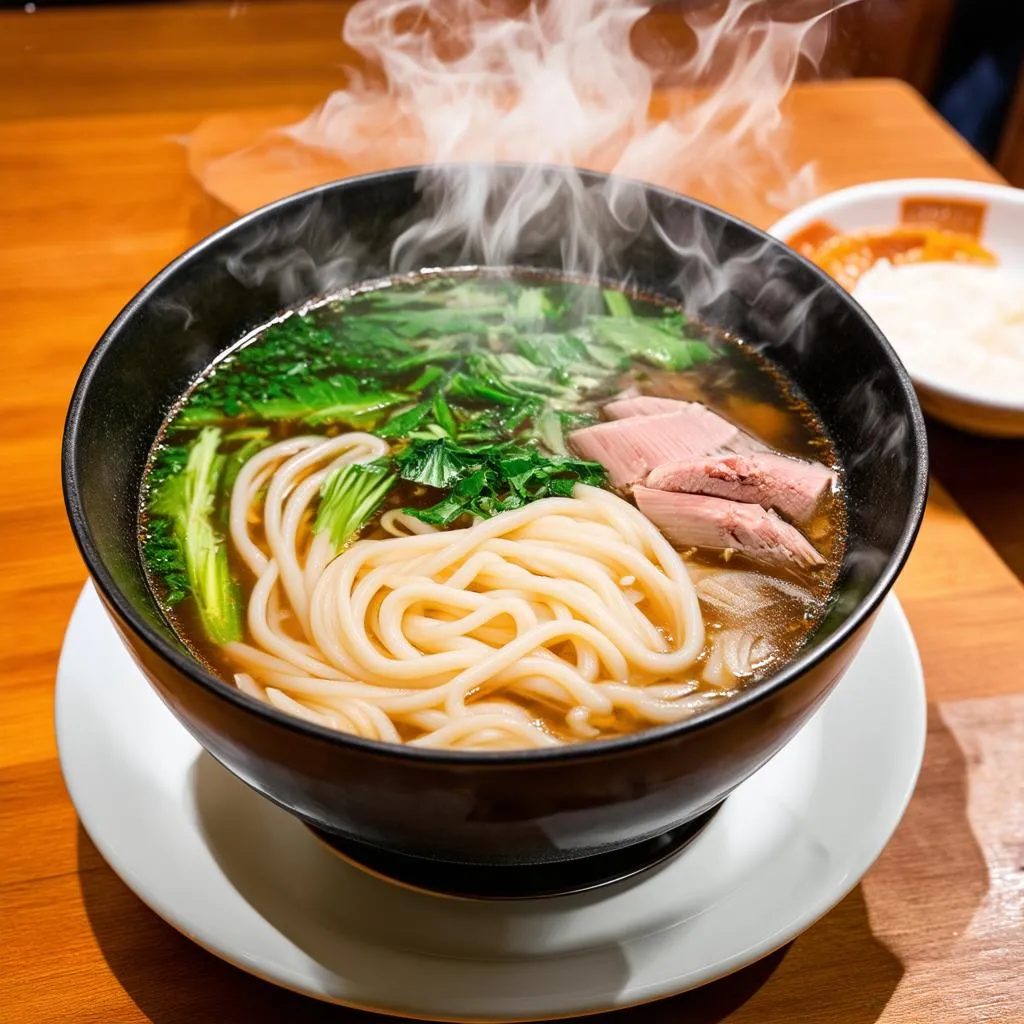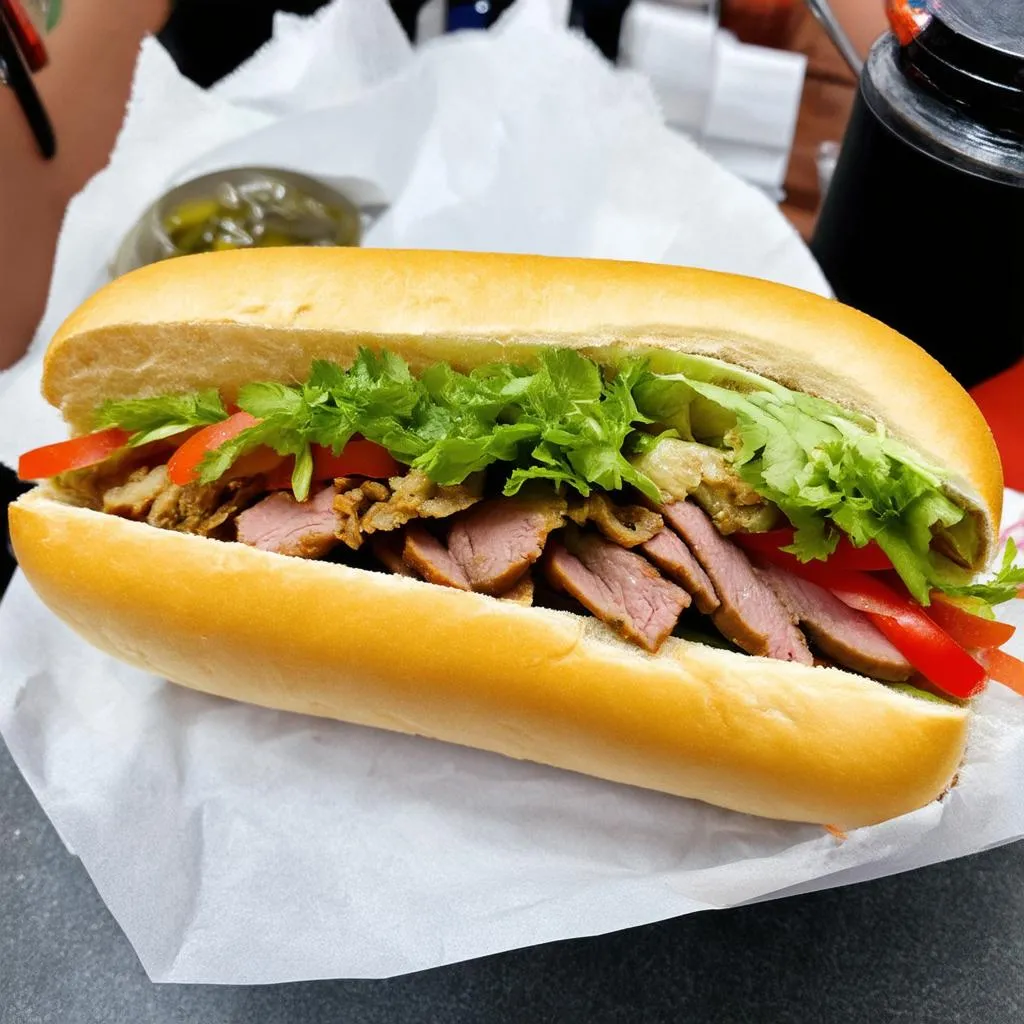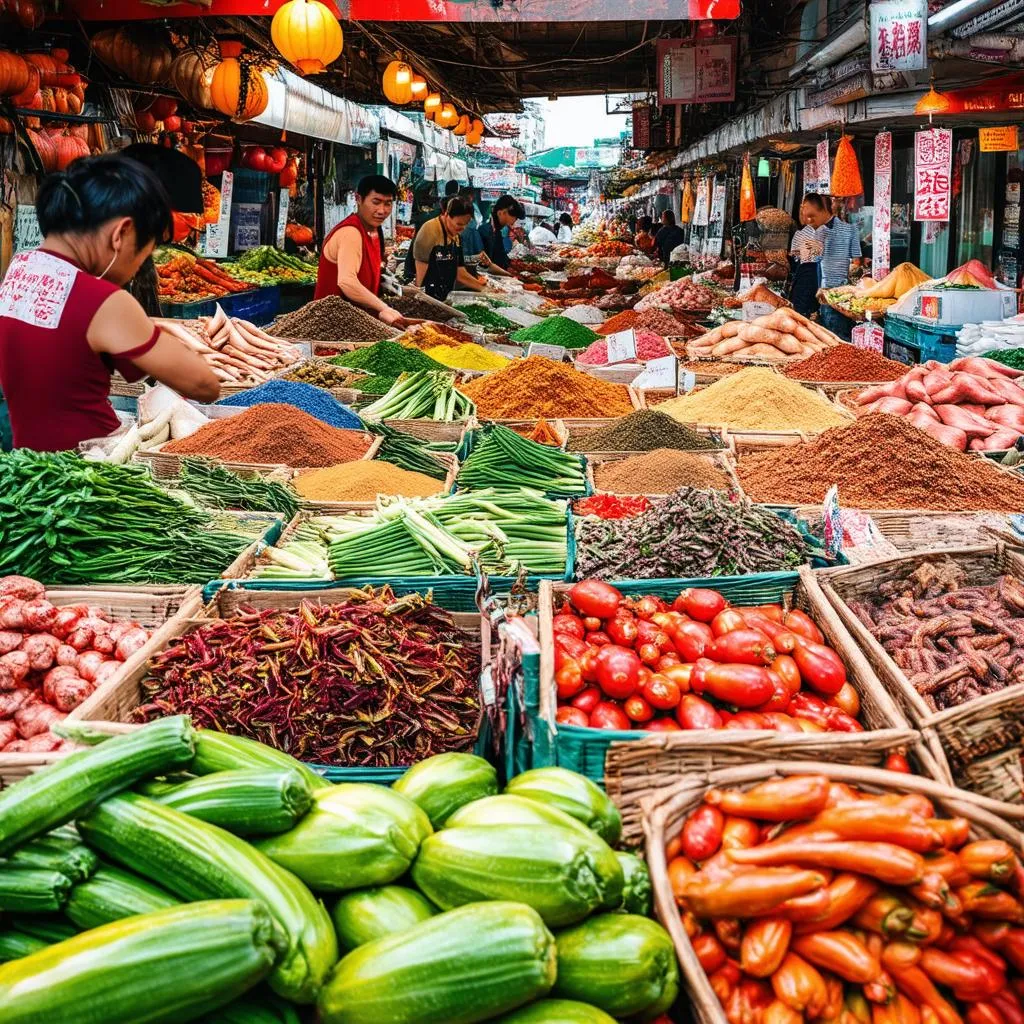Have you ever been in a foreign country, craving a delicious bowl of pho, only to find yourself struggling to describe it to a local? Or perhaps you’re planning a trip to Vietnam and want to learn the names of your favorite dishes in English. Whatever your reason, knowing how to translate Vietnamese food into English can make your culinary experiences more enjoyable.
The Art of Translating Vietnamese Cuisine
Vietnamese food is known for its vibrant flavors, fresh ingredients, and diverse range of dishes. But translating these dishes into English can be a challenge. Many Vietnamese dishes have unique names that don’t have direct equivalents in English.
Finding the Right Words
1. Literal Translation vs. Descriptive Translation:
One approach is to use a literal translation. However, this can sometimes be confusing or awkward. For example, “Bún chả” literally translates to “Vermicelli with grilled pork,” but this doesn’t capture the essence of the dish. A descriptive translation might be “Vietnamese Vermicelli with Grilled Pork,” or even “Hanoi-style Noodle Salad with Grilled Pork.”
2. Using English Equivalents:
Some Vietnamese dishes have clear English equivalents. For example, “Gỏi cuốn” (fresh spring rolls) can be simply translated as “Spring Rolls.” However, you should note that these equivalents may not be exactly the same as the Vietnamese version.
3. Incorporating Local Names:
In some cases, using the local name alongside a brief description can be helpful. For instance, you could say “Pho, a Vietnamese noodle soup,” or “Banh mi, a popular Vietnamese sandwich.”
Vietnamese Food Translation Tips
- Consider the context. Are you talking to a friend, a chef, or a restaurant owner? Adjust your language accordingly.
- Be specific. Don’t just say “Vietnamese food.” Try to be more specific and mention the dish’s name.
- Use descriptive language. If you can’t find a direct English translation, use descriptive words to help people understand what the dish is like.
- Use online resources. Many websites and apps offer translations of Vietnamese food.
- Practice! The more you practice, the more confident you will become in your ability to translate Vietnamese food.
Common Vietnamese Dishes and Their English Translations:
Here’s a quick reference guide for some popular Vietnamese dishes:
| Vietnamese Name | English Translation | Description |
|---|---|---|
| Pho | Pho | Vietnamese noodle soup with beef or chicken broth, rice noodles, herbs, and meat |
| Bún chả | Hanoi-style Noodle Salad with Grilled Pork | Vermicelli noodles served with grilled pork patties, dipping sauce, and fresh herbs |
| Gỏi cuốn | Spring Rolls | Fresh rice paper rolls filled with vegetables, noodles, and sometimes meat |
| Bánh mì | Vietnamese Sandwich | Savory baguette filled with various ingredients, such as grilled pork, pickled vegetables, and cilantro |
| Cơm tấm | Broken Rice | A dish of broken rice served with grilled pork, fried egg, and pickled vegetables |
| Bún bò Huế | Beef Noodle Soup from Hue | Spicy beef noodle soup with lemongrass, chili, and other spices |
Planning Your Vietnamese Culinary Adventure:
1. Research and Explore:
Before embarking on your culinary adventure, take some time to research Vietnamese food and discover dishes that pique your interest. You can find countless online resources, cookbooks, and travel blogs dedicated to Vietnamese cuisine.
2. Explore Local Markets:
Immerse yourself in the vibrant atmosphere of Vietnamese markets. Here, you’ll encounter a cornucopia of fresh ingredients, aromatic spices, and local specialties. Don’t be afraid to ask questions and engage with the friendly vendors.
3. Seek out Authentic Restaurants:
Instead of opting for tourist traps, venture into neighborhoods with a high concentration of Vietnamese restaurants. Ask locals for recommendations or check online reviews.
4. Embrace the Dining Experience:
Savor the unique flavors and textures of Vietnamese cuisine. Embrace the communal dining experience and enjoy the company of your fellow diners.
A Vietnamese Food Story:
Remember that time you were lost in the bustling streets of Ho Chi Minh City, your stomach grumbling with hunger? You stumbled upon a tiny, unassuming stall tucked away in a side street. It was overflowing with steaming bowls of pho, the aroma of star anise and ginger filling the air.
You hesitantly took a seat, watching as the owner ladled out a generous portion of noodles, broth, and tender slices of beef. Taking your first sip, you were transported to a world of pure flavor – a symphony of savory, sweet, and spicy notes. It was an unforgettable culinary experience that left you craving more.
Vietnamese Food and Feng Shui:
In Feng Shui, food is believed to play a significant role in our well-being and overall harmony. Vietnamese cuisine, with its emphasis on fresh, natural ingredients and vibrant colors, aligns with the principles of Feng Shui. The use of fresh herbs and spices is believed to promote positive energy, while the colorful dishes are said to bring joy and balance to the table.
Travelcar.edu.vn: Your Gateway to Vietnamese Culinary Adventures:
For more information on Vietnamese food and travel, visit Travelcar.edu.vn. Our website is a comprehensive resource for all things travel, including tips on navigating Vietnamese cuisine, discovering hidden gems, and planning your ultimate culinary adventure.
Frequently Asked Questions:
Q: What is the best way to learn Vietnamese food names in English?
A: The best way to learn Vietnamese food names in English is through practice and exposure. You can start by researching common dishes and their English translations online or in cookbooks. You can also immerse yourself in the language by visiting Vietnamese restaurants and talking to locals.
Q: What are some popular Vietnamese street food dishes?
A: Some popular Vietnamese street food dishes include:
- Bánh xèo: A crispy crepe filled with shrimp, pork, and bean sprouts.
- Bánh cam: A sweet and savory cake made with rice flour and mung beans.
- Bánh tráng trộn: A salad made with dried rice paper, vegetables, and a spicy sauce.
- Chè chuối: A sweet dessert made with bananas, tapioca, and coconut milk.
Q: Are there any tips for ordering Vietnamese food at a restaurant?
A: Here are some tips for ordering Vietnamese food at a restaurant:
- Ask for recommendations: Don’t be afraid to ask your server for recommendations. They can help you choose dishes based on your preferences.
- Don’t be afraid to try new things: Vietnamese cuisine offers a wide range of flavors and textures. Be adventurous and try something new!
- Be patient: Vietnamese food is often prepared fresh, so it may take some time to prepare.
Q: What are some Vietnamese food blogs or websites that offer translations?
A: Here are a few websites that offer Vietnamese food translations:
- Vietnamese Food Blog: A website dedicated to Vietnamese food with recipes, travel tips, and cultural insights.
- The Viet Foodie: A food blog that showcases Vietnamese cuisine with beautiful photos and detailed descriptions.
- Food & Wine: A website with articles on Vietnamese food and its cultural significance.
Q: Where are some of the best places to experience Vietnamese food in Vietnam?
A: Some of the best places to experience Vietnamese food in Vietnam include:
- Hanoi: Known for its street food, pho, and banh mi.
- Ho Chi Minh City: A bustling city with a wide variety of restaurants offering both traditional and modern Vietnamese cuisine.
- Hue: A city renowned for its imperial cuisine and banh xeo.
- Da Nang: A coastal city with a strong culinary tradition, famous for its seafood and banh mi.
 pho-noodle-soup
pho-noodle-soup
 vietnamese-sandwich
vietnamese-sandwich
 fresh-ingredients
fresh-ingredients
Enjoy your culinary exploration of Vietnamese cuisine! Don’t hesitate to reach out to us at TRAVELCAR.edu.vn if you have any questions or need further guidance. Happy travels!
